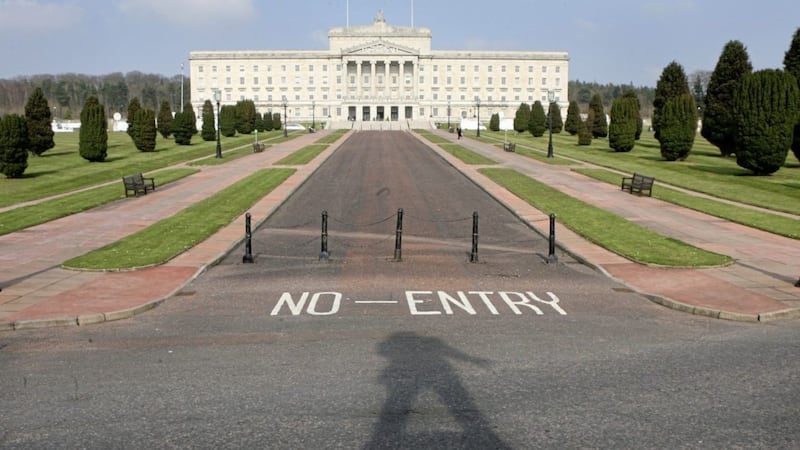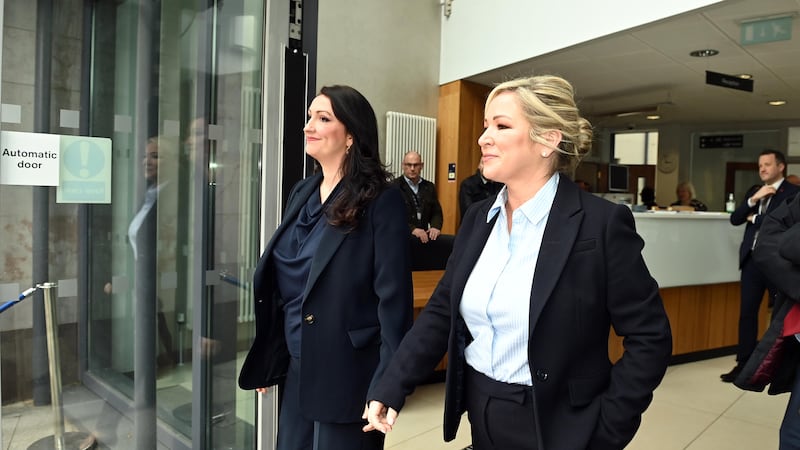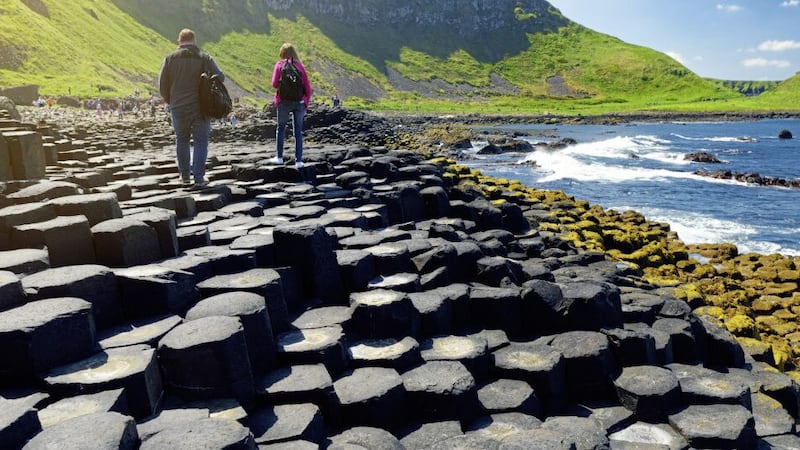SINN Féin councillor Deirdre Hargey was talking about statues at the Belfast City Hall the other day.
"Our position would be additionality and looking at what else we can add," she said.
"I mean, the reality is that the building comes from a unionist era, there is no doubt about that.
"The statues come from one section of our community. And I think that our approach would be around how we can rebalance that."
Her comments reminded me of a response from Mike Nesbitt during an interview with me in July 2014.
"For example, I am very sympathetic to the fact that we have a statue of Carson and Craigavon here [Stormont], but we don't have any statues that would represent Irish nationalism here, never mind Irish republicanism," he said.
"And I think that is something which is not fair and should be addressed. We cannot pretend that Irish nationalism and Irish republicanism does not have a past.
"Is it fair that in this building - which since 1998 is no longer a majoritarian government - that there isn't some sort of recognition of the nationalist and republican past?"
There is a difficulty with both their positions: an us-and-them approach to statues doesn't, in fact, do anything to address the corrosive and continuing divides within our society.
All it does is hammer home the reality that we remain two peoples with two histories, still fighting over the future.
And in constantly emphasising those differences we make it impossible to move forward together, leaving us doomed to pursue the psychologically destructive policy of my statue, our statue; my language, our language; my parade, our parade; my commemoration, our commemoration; my hero, our hero; my country, our country; your fault, your fault.
I wonder if we do have anything in common? I'm pretty sure that if I stopped 10 people in the street - and yes, I know that someone will, right now, be thinking, "OK, Alex, but what street are you going to?" - and asked them to set aside the constitutional question and tell me what they had in common with everyone else in Northern Ireland - "Hang on, Alex, why did you call it Northern Ireland?" - that I'd get a variation of the Miss World mantra: "Happiness and world peace."
And that's because people will always give the boring answer at times like that.
Everyone wants peace, stability, good government and cross-community cooperation. Everyone wants a smile and a song and our children frolicking together in designer turquoise.
Better still, how would they respond if I asked them to come up with a list of people who deserved to be immortalised in a statue.
James Galway? Hmm, quite a few unionists responded very badly to his united Ireland comments on the Nolan Show a couple of years ago.
Mary Peters? Well, she's a Dame and a former Lord Lieutenant, appointed by the Queen.
Liam Neeson? He sticks his nose into local politics by supporting integrated education.
Rory McIlroy? He chose to represent Ireland and not GB in the 2016 Olympics.
Van Morrison? He's a professional grump.
By the way, those responses are not my personal view - just a few views I have heard expressed about those five people.
Nelson Mandela insisted that a peace process, to be successful, had to be built on a multiplicity of common values, common purposes and a broadly common identity. None of which we have here.
The inability to agree on a constitutional identity makes it extraordinarily difficult - in our case, impossible - to agree on common values and purposes.
Which, in turn, means that we see almost everything through the prism of competing identities. Sauce, goose and gander come to mind.
Nelson Mandela insisted that a peace process, to be successful, had to be built on a multiplicity of common values, common purposes and a broadly common identity. None of which we have here
So a statue has nothing to do with bonding and embracing: it's just another way of saying: "He/she is ours, so there."
To which the Pavlovian response must be: "We want one, too."
A new beginning requires a starting point: a point at which everyone - or almost everyone - has agreed that we move forward together to the same destination.
It doesn't mean that there won't be debate about the best route and policies, but it does mean that we're all pointing in the same direction. That is not the case here. It never can be the case here.
That said, the problem wouldn't go away if the union were replaced with a united Ireland.
A considerable portion of what is now Northern Ireland will always be 'a place apart' in political/electoral/cultural/historical/identity terms.
The British/unionist identity is as strong and determined as the republican Irish/nationalist identity and will remain so.
All of Ireland under the Crown; a partitioned Ireland; Stormont rule; direct rule; power-sharing; DUP/Sinn Féin axis; a reunified Ireland: it doesn't really matter.
The relationship between unionism and republicanism will always be a toxic one. There is no solution capable of delivering harmony, consensus and common identity.
But if someone does manage to prove me wrong, I'd be happy to see them on a plinth in Belfast, London and Dublin.








